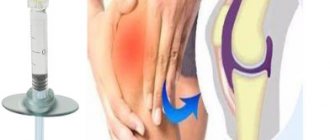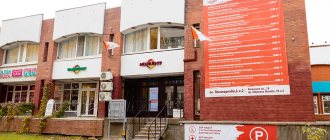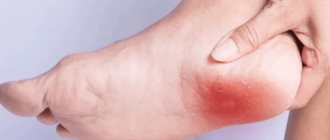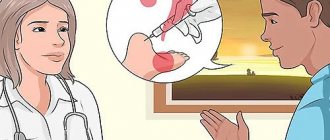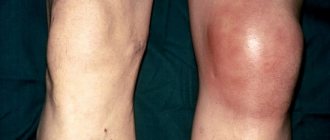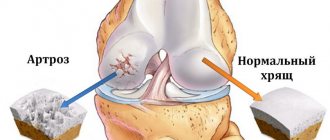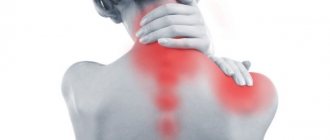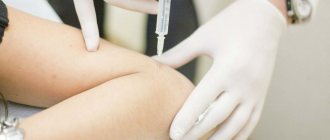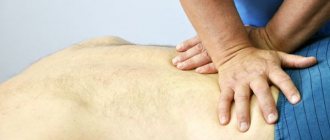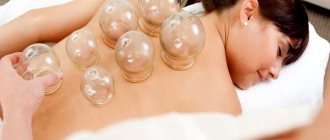Content
- Knee injections: Benefits of blockades
- How to do a blockade for leg pain
- Treatment of knee joint diseases with blockades
- Cost of treatment
- We recommend reading
Pain levels
0 — 3
Mild pain
- does not interfere with everyday activities, but you can adapt to the pain.
4-6
Moderate pain
- prevents you from doing business, prevents you from concentrating, the patient remains independent
7-8
Strong pain
- it is impossible to carry out daily activities, it is difficult to think about anything other than pain, the patient cannot function independently
9-10
Unbearable pain
- requires urgent care, bed rest, disables the patient
Joint fluid examination
- Outside of the inflammatory process, the aspirated fluid will be clear, light, and non-inflammatory.
- Infected joint fluid resembles pus and can often have a foul odor. The inflammatory fluid is cloudy, thick and relatively non-viscous.
- First, you need to shake the liquid in the syringe to create some air bubbles. If the bubbles rise slowly, then the liquid is of high viscosity and, therefore, it is highly doubtful that it is of an inflammatory nature.
- The presence of blood in the synovial fluid suggests injury, malignancy, or hemophilia. Joint injury caused by rheumatoid arthritis or osteoarthritis, with the presence of blood in the intra-articular fluid, is a contraindication for injection therapy. Sometimes minor bleeding occurs during joint puncture. In such cases, the blood is always mixed unevenly with the clear liquid.
Knee injections: Benefits of blockades
Blocking the knee joint for arthrosis allows you to quickly eliminate acute pain and relieve swelling and inflammation. The effect is observed almost immediately after administration, so after 10-15 minutes the patient can freely step on his foot. If necessary, the procedure can be repeated; the course consists of 5-7 injections.
The technique allows the doctor to immediately begin treating the joint disease and quickly relieve pain. The only downside that can be noted is the injection itself, which involves puncturing the skin.
Blockade of the knee joint is prescribed for arthritis, tendovaginitis, synovitis, bursitis and other diseases of the knee.
During the blockade, special drugs are injected into the joint, since the medicine acts at the site of inflammation, then after 10-15 minutes the patient feels a decrease in pain. Thanks to such injections, movement in the joint is restored faster.
Does intra-articular block eliminate the cause of the disease?
If the disease is caused by muscle spasm, for example, due to osteochondrosis, back pain, then the blockade will help relax the muscles and eliminate the source of inflammation. If the joints are affected, then usually chondoprotectors and anti-inflammatory drugs are added to painkillers; simple pain relief will not be enough.
Which treatment method to choose is determined by the attending physician during the initial appointment. As a rule, blockades are only one type of complex treatment. In addition to the blockade, physiotherapeutic treatments and other medications are effective.
How to do a blockade for leg pain
For treatment, doctors use the following methods:
- Blockade of the knee joint with diprospan is used to relieve inflammation in synovitis, bursitis and arthritis. Valid for up to several days.
- Dexamethasone injection - prescribed for moderate symptoms. The action lasts up to 3-5 days.
- Injection of Kenalog and Lidocaine - the effect occurs in 15-20 minutes, and has a prolonged effect of up to 2-3 weeks.
- Novocaine blockade of the knee joint only relieves pain, not inflammation. Sometimes replaced with lidocaine or trimecaine.
The administration of the drug is always carried out after preliminary anesthesia. Success depends on the professional skills of the doctor, as well as the stage of development of the disease.
|
|
Sign up for treatment
During the duration of the drug and after the procedure, the patient is recommended to:
- avoid excessive physical activity;
- do not wet or stain the injection site;
- strictly follow all recommendations of the attending physician.
You can find out the price of drug knee blockade or injections for arthrosis of the knee joint, read reviews and make an appointment directly on our website.
Who needs a blockade?
Drug blockade is used for diseases of the nervous system and musculoskeletal system. It is prescribed for acute and chronic diseases of the back and joints:
- osteochondrosis;
- intervertebral hernia;
- intercostal neuralgia;
- arthritis – inflammation of the joint;
- arthrosis is a chronic disease of the joint with the destruction of its cartilage;
- bursitis – inflammation of the mucous bursae around the joint;
- injuries: ligament rupture, joint dislocation.
The purpose of the therapeutic blockade is to relieve pain and swelling, restore mobility to the back and joints, and alleviate the patient’s condition. For this purpose, local anesthetics and analgesics are used. The drug penetrates the nerve fibers and blocks impulse transmission. Signals from pain receptors do not travel to the brain, and the person does not feel pain. This is a temporary measure - the pain will return when the effect of the drug wears off.
An experienced specialist knows exactly how and where to insert the needle.
If you add steroid hormones or chondroprotectors to anesthetics, you can enhance the effect of the blockade. Now this is not just an injection for pain, but a means for complete treatment. The medicine is injected directly into the affected area and works faster than tablets. It inhibits the destruction of joint cartilage, normalizes metabolism, restores blood flow and improves the patient's condition.
Treatment of knee joints with blockade at the Stoparthrosis clinic
At the Stoparthrosis clinic you can undergo a drug blockade, undergo a full examination and receive advice from our specialists. The doctor will conduct an examination, test movements in the joint, create an individual program and personally supervise the entire recovery course.
Remember that self-medication can harm your health and lead to irreversible consequences. Take care of yourself.
Sign up for treatment with us by phone +7 495 134 03 41
or leave a request on the website.
Author of the article:
Litvinenko Andrey Sergeevich
Orthopedist
Make an appointment
Recent publications by the author:
- Blockade at home
- Blockade for muscle pain
- Heel spur block
- Ankle block
Pain in the knee joint can occur both due to damage to the structures of the joint itself (hyaline cartilage, subchondral bone, inflammation of the synovium) and periarticular structures (entheses, tendons, periarticular bursae). If the process is local in nature, then it is most effective to apply the local focus of therapeutic actions. In addition to orthotics, physical rehabilitation methods and systemic drug treatment, blockades with drugs are widely used. It is important to choose the right drug and the structure into which it should be administered. Of course, this is determined by the doctor, but the patient’s knowledge of this method helps to seek help from a doctor who knows local therapy techniques.
For inflammation in the knee joint, anti-inflammatory drugs are prescribed in tablet or injection form. But, as a rule, their effect is delayed and incomplete. Long-term use of anti-inflammatory drugs may be accompanied by a number of adverse effects.
Experiments to solve this problem by using NSAIDs locally in the form of ointments and gels in some cases achieve the goal, however, in terms of effectiveness, these forms are significantly inferior to tablet drugs. The reason is that the drug does not penetrate deep enough through the skin.
An alternative to taking NSAIDs to suppress the inflammatory process during inflammation in the joint is local injection therapy with glucocorticosteroids (GCS), which has been used in rheumatology for more than 50 years. The principle of the method is the local administration of a suspension of slowly soluble GCS crystals, which quickly and effectively suppress the aseptic inflammatory process in the structure (synovium, bursa, tendon sheath, enthesis) responsible for the pain syndrome. Intra-articular administration of GCS for pain in the knee joint is carried out only in the presence of clear signs of inflammation (pain at rest, exudate, fever), determined clinically or instrumentally (ultrasound).
For blockade, as a rule, drugs such as hydrocortisone acetate, methylprednisolone acetate or betamethasone dipropionate (diprospan) are used. The use of tramsinolone (kenalog) is unjustified due to the ability of this drug to cause local tissue atrophy.
Single doses of drugs injected into the knee joint: hydrocortisone 125 mg, methylprednisolone 40–80 mg, diprospan 3.5–7 mg (0.5–1 ml).
L local injection of GCS is a one-time procedure; the total frequency of injections into one joint should not exceed 4 during the year. The lack of effect or its short duration (less than 2 weeks) from 2 injections of GCS is a contraindication for further use of this method.
If the direct source of pain is a lesion (enthesopathy) of the pes anserinus - “crow's foot” (the place of attachment of the tendons of the semitendinosus, semimembranous and graceful muscles of the thigh to the medial surface of the tibia in the area of the knee joint). The pathology is designated by the term “anzerine tendobursitis,” which extremely often accompanies arthrosis of the knee joint (especially associated with longitudinal flatfoot) and is often the only clinical manifestation of the disease. This diagnosis is made if the zone of maximum pain is 4–5 cm below the joint space on the inside of the joint. The introduction of GCS into the corresponding structure leads to the complete disappearance of the pain syndrome.
Synovitis in arthrosis is often accompanied by the formation of a Baker's cyst - an accumulation of synovial fluid in the popliteal bursa . Due to the anatomical features of the knee joint, in some patients, subjective and objective symptoms of the cyst (mass formation, mechanical obstruction to flexion in the knee joint, pain in the popliteal region) may prevail over the symptoms of synovitis itself. However, it should be taken into account that the source of excess formation of synovial fluid is the synovium of the joint. In this situation, to successfully relieve synovitis (and eliminate Baker's cyst in fresh cases), GCS must be injected into the joint cavity, and not into the cyst. Only when this approach turns out to be insufficient, the Baker cyst itself is punctured and emptied.
Intra-articular injection of hyaluronic acid preparations
Taking chondroprotectors orally implies, on the one hand, their incomplete penetration of the intestinal barrier, and on the other hand, leads to its distribution throughout the body, i.e. very little of the drug reaches the clinically significant joint. An alternative to the oral use of chondroprotectors is the use of hyaluronic acid preparations.
The therapeutic effect of hyaluronic acid preparations is associated with the properties of sodium hyaluronate, which improves the quality characteristics of intra-articular fluid and increases joint mobility. Hyaluronic acid, when broken down, enters the intercellular space, stimulating the production of its own hyaluronic acid, which affects the quality of the matrix (intercellular fluid). Since there is no cellular regeneration in cartilage tissue, the destroyed cartilage components are filled with intercellular fluid enriched with hyaluronic acid from the preparations. Extracellular regeneration occurs, providing elasticity, firmness and the gliding effect of cartilage tissue in the joint. Currently, evidence has been accumulated confirming the effectiveness of hyaluronic acid preparations for the treatment of arthrosis of the knee joint.
The most studied and effective drug from this group is FERMATRON. Intra-articular administration of GLA preparations requires an impeccable technique for intra-articular injections. The drug must be administered into a “dry” joint, which is often altered by a degenerative process, which is technically more difficult than puncture of a joint with effusion.
Treatment of each patient with pain in the knee joint is individual, and the doctor choosing the optimal treatment regimen for a particular patient must undoubtedly keep in mind the possibilities and advantages of local injection therapy.
appointment with a rheumatologist for an appointment and a therapeutic blockade in Samara by calling the phone number on the contact page of our website.
Prices for drug blockades
| Services | Price | Sign up |
| Ankle block | 3000 rub | Sign up |
| Knee block | 3000 rub | Sign up |
| Elbow block | 3000 rub | Sign up |
| Wrist block | 3000 rub | Sign up |
| Interphalangeal joint block | 2000 rub | Sign up |
| Shoulder joint block | 3000 rub | Sign up |
| Heel spur block | 3000 rubles 5000 rubles | Sign up |
| Ultrasound-guided hip block | 4000 rubles 5000 rubles | Sign up |
Causes
The main causes of diseases of the wrist joint can be:
- inflammation;
- age-related changes in joints;
- injuries: fractures, bruises and others;
- referred pain from diseases or injuries of the cervical spine;
- monotonous manual labor.
Hand diseases
Signs of hand joint injury depend on the severity of dysfunction of the ligaments, muscles or bones.
Associated symptoms are determined by a specific disease:
- Tendinitis of the wrist joint is an inflammatory process of the tendons that has spread to adjacent muscles and tissues;
- De Quervain's disease is a disorder of the tendon of the thumb. Occupational disease resulting from constant specific physical activity;
- Carpal tunnel syndrome (a type of tunnel syndrome) - pinched nerves in the working hand due to overexertion;
- Styloiditis of the radius is a pathological change in the attachment of the tendon to the bone;
- A cyst is the appearance of a neoplasm, a consequence of a metabolic disorder. Leads to non-traumatic bone fractures;
- Arthritis is a connective tissue lesion of an infectious, autoimmune or traumatic nature.
Each disease provokes the development of characteristic symptoms: pain, limited mobility, specific deformation, complications of the heart, kidneys or lungs, and others. A complete diagnosis is required to make a correct diagnosis, as well as complex therapy to treat or limit the progression of the disease.
Our doctors
- LITVINENKO Andrey Sergeevich
Traumatologist orthopedist Sports medicine doctor Experience: 19 yearsSign up
- SKRYPOVA Irina Viktorovna
Physiotherapist rehabilitator Experience: 20 yearsSign up
- MOISEENKO Alexey Yurievich
Traumatologist orthopedist Sports medicine doctor Experience: 17 yearsSign up
- KHOLIKOV Timur Vyacheslavovich
Traumatologist orthopedist Sports medicine doctor Experience: 19 yearsSign up
REVIEWS FROM OUR PATIENTS
“ We are sincerely grateful for every review you leave! ”
Add a comment
hope 05/31/2021 13:56:28
I was forbidden to do diprospan. The doctors were also told not to do these blockades. the joint is destroyed.
Show answer
KHOLIKOV Timur Vyacheslavovich 06.06.2021 21:02:57
Good afternoon Nadezhda! A blockade with diprospan is done according to strict indications, the most common being the accumulation of effusion in the joint or synovitis and severe pain that cannot be relieved by other means. With frequent injections, this drug can actually do more harm than good. We recommend that you see a doctor before the injection.
Contraindications for hand blockade
Despite the fact that the procedure is safe, popular, and has many advantages, doctors also talk about contraindications. Blockade of the carpal tunnel and other areas is not recommended:
- in pediatrics for patients under 12 years of age;
- allergy sufferers and people intolerant to drugs used for injection;
- patients with mental disorders, low blood clotting rates;
- persons who are diagnosed with dermatological infections at the sites of intended injection.
Such therapy is not carried out during pregnancy and lactation. A traumatologist, therapist, or neurologist can prohibit blocking a finger on the hand in case of diabetes mellitus of any degree or form, renal or heart failure, persistently low blood pressure, or obesity.
Why do they contact us?
- No queues
No need to wait, we work by appointment
- All in one day
Doctor's appointment, diagnosis and treatment on the day of treatment
- Let's relieve the pain
We will help you relieve pain in just 1-2 visits to us
- We guarantee
Professional approach, affordable prices and quality
- Doctor's appointment 0 RUB!
During course treatment all consultations are free
- Three treatment options
We will select several options and offer optimal treatment
When not to blockade
Therapeutic blockade is not performed in the following conditions:
- epilepsy;
- mental disorders;
- arterial hypotension;
- heart pathology;
- infectious skin diseases;
- pregnancy and lactation;
- allergy to blockade medications.
Joint and spinal blockade is not an alternative to the main treatment. It helps temporarily relieve pain and muscle spasms, but does not solve the problem completely. In order not to start the disease, get examined and complete the full course of treatment as prescribed by your doctor.
